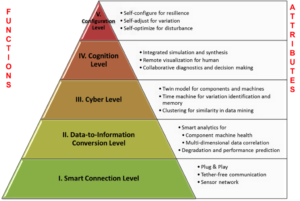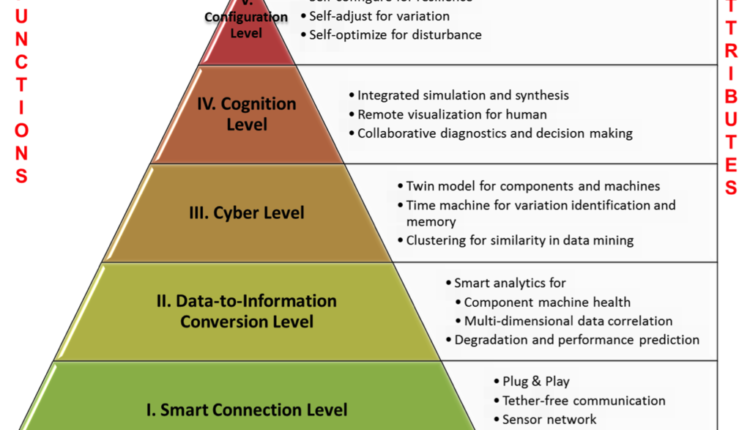Application of IoT in Marketing
Internet of Things (IoT) is defined as the inter-networking of machines and information through software and devices such as sensor, actuator, and embedded systems to create an information flow chain from an end user instruction to device activation-deactivation cycles through the system. For instance, if you want to have your room cooled, a bucket of hot water for bathing by the time you reach home from your office, you could use IoT. The mobile device will act as the equipment with the requisite software to receive data about room temperature and humidity. Once the end user receives this information, he decides how much cooling he desires for his comfort and feeds the temperature and humidity level (H/L) on his mobile app. This information is delivered to the Air Conditioner through an embedded electronic sensor with a mobile device. This information is processed by the device which interacts with the AC and switches it on and sets the temperature and humidity as per instructions. To circulate the cold air, the AC sends instructions to the ceiling fan via embedded chips and transistors and keeps the fan ON for a specified duration for this purpose. If the user wants hot water, the relevant instruction fed into the mobile app is delivered to the geyser which would enable the geyser to run for a specified duration for obtaining the hot water.

IoT is a powerful tool which can be applied in Marketing to capture consumer usage patterns, buying trends, sales frequency, sales distribution network characteristics, identification of advertising spots and developing relevant marketing content. Today, marketing could be broadly divided into A) Traditional Marketing and B) Digital Marketing.
A) Traditional Marketing:
Currently, companies rely on Market Research to understand consumer’s latent needs and the type of products which can be useful to satisfy these needs. The New Product Development division uses these insights to come up with new products using advanced R&D and other expertise. Once this product is created, the management decides on a pricing strategy to keep the product competitive in the market. Thirdly, it determines the target audience for the new products through extensive consumer research and secondary studies. The firm also lays out the distribution plan to reach out to maximum potential consumers quickly and in a cost-effective way. Lastly, through a smart advertising campaign, the product is positioned in an appropriate manner to convince consumers of its effectiveness as a tool to satiate his needs.
IoT can be effectively applied at each stage of the Marketing process.
Stage 1: The firm can communicate with social media sites and gather information from user database about user characteristics such common searches, the frequency of such searches, related words data, and demographic details of all such data. All the data is integrated into a common database using data extraction and analysis tools. Product engineers could then use this data to basket it under different technical features and design. Design engineers could use 3D drawings and 3D printing tools to test run each possible alternative. Each alternative could be tested on hypothetical customer right from point of purchase to application and feedback. This data can be synthesized from past data and behavior trends available from Social media, Mobile, Analytics and Cloud (SMAC) insights available. After all possible simulations are carried out, an evaluation software can assess the potential success of each alternative based on parameters such as innovation, relevance, utility, value for money and ease of use. The alternative with the highest Composite score shall be selected for launch.
Stage 2: Market Research of target consumers can be made latent through embedded data transfer technologies. Existing product usage characteristics can be tracked by the firm from the behavior of mobile users on lifestyle apps, online purchase prices, and camouflaged surveys. Once the firm is able to establish the maximum price consumer pays for products with an assortment of the set of its characteristics, the firm can use factor analysis to integrate all such correlations to fix an appropriate price and test run it in a small sample. Once that test is passed, the firm can go ahead with the product launch at the price determined.
Stage 3: To determine the geography and penetration level, the firm can assess the penetration of allied goods and services in the given geography through a sharing agreement and partnership with such companies. For example, if the new product is to be related to respiratory diseases, the firm could tie up with tobacco firm to gather statistics of tobacco sales and medical records of the users and their purchasing power. Once this data is available, the firm decides whether to enter this geographic area or not. Through extensive use of sensors, it could be possible to track consumption frequency from each store and obtain which stores register maximum sales. This data can be transferred to the nearby distributors for charting out micro-targeting plans.
Stage 4: Display screens with embedded computing systems can be used to display digital ad banners after receiving data about the traffic in the vicinity through data streaming from sensors. Data analytics from different geographic areas could reveal the color, design preferences which would suggest the kind of advertisement designed for use in different places. Another way of advertising is focused targeting by receiving specific consumption data about households and forwarding messages to members of that household by gathering online usage information. Viral marketing is one area which would be useful to implement via IoT.
B) Digital Marketing:
IoT is set to be a revelation in the space of Digital Marketing. One of the key applications will be using embedded chips to detect mobile signals in the vicinity. By tracking the usage details with the collaboration of telecom companies, the marketing division can precisely track the data usage patterns in each place. For example, in a shopping mall, people might be checking out movie trailers, songs, videos, shopping and lifestyle products through their smartphones. Once the marketing division receives this data, it can relay this information to the marketing division and the marketing division can extract relevant ads and campaign featuring movie stars popular in that geography and relay this message through relevant content stores like mobile, electronics and entertainment zones in the mall. This identification process can be undertaken using RFID. By connecting relevant products and images in the ad through electronic tagging, campaign sharing strategies can be undertaken by first identifying common sellers through electronic sensors, and subsequently sharing the advertisements in a bid to promote not only the core product but also the electronic good which would act as an ancillary product in the advertisement. A good implementation of Guerilla marketing has the potential to tap into the consumer’s curiousness and flash an interest in this product.
To summarize, IoT has the power to address the problem of identifying and sorting areas of unmet demands and personalizing the marketing experience tailored for his demands in a cost effective manner for the company.

